
12 minute read
Pearly Queen
talks royal tiaras, pushing design boundaries, and the enduring appeal of pearls

Advertisement
Pearls are back in fashion. You’ve probably read that on multiple style-focused platforms this year. As you would have done at some point in 2022, when L’Officiel stated that ‘pearls are back and better than ever’. And again in 2021, when Forbes declared them as ‘the biggest trend for summer’. I could go on through years gone by to find similarly bold claims of the pearl’s apparent resurrection among the style set, but you will, no doubt, have already got my point; that pearls have never not been in style.
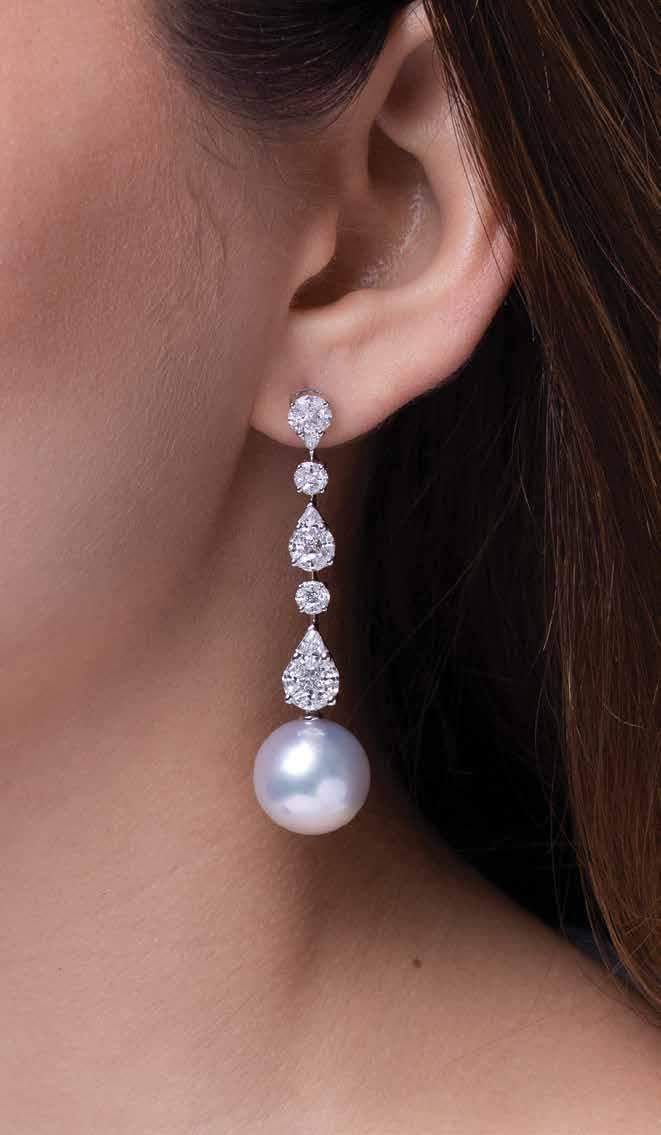
It’s a view shared by Michael Hakimian, CEO of Yoko London, a luxury pearl jeweller which celebrates its 50th anniversary this year. “Pearls have a timeless allure that transcends generations,” he says, reflecting on their enduring appeal. “But I think the variety and innovation in pearl jewellery design contribute to this rise in popularity. Clients can find designs that reflect their own personal style, be it contemporary or classic.”
At Yoko London, that means trusting its team of handpicked experts to begin the process not with the person, but with the pearl. “The pearl has always been the focus of every piece we create. In our London workshop, we meticulously hand select every pearl that is featured in our jewellery. And with each piece, we try to highlight the most beautiful part of the pearl.”
On rare occasions – such as the coronation of a new monarch – such pieces are even fit for royalty. To commemorate King Charles III’s ascension to the British throne earlier this year, Yoko London produced a one-of-a-kind tiara. The spectacular piece (available to view this summer at the brand’s flagship store on London’s Sloane Street) features nineteen p erfectly matched, lustrous Australian South Sea drop shaped pearls, ranging from 8-15mm, which move gently as the wearer moves. These pearls are placed amongst 24.97cts of diamonds and set in 18ct white gold, in an intricate design for which the pearls, of course, take star billing. “From design to production, it took several months to create,” says Hakimian, who took on the role of CEO at the company his father founded, where colleagues include his brother and sister. ‘We sourced the pearls from several farms to ensure a perfect match and to achieve a seamless graduation. These pearls were then set by hand in our London workshop.”
Though the Coronation Tiara may have been the headline-hogging piece, Yoko London’s latest high jewellery collection – revealed at this year’s Haute Jewels Geneva – features a number of spectacular creations. ‘Whisper’ is a South Sea pearl and diamond necklace in 18ct white gold, for which seven luminous pearls are suspended beneath 16.65cts of scintillating diamond curves. The same design is used on a pair of matching earrings, this time a 14.1mm South Sea pearl hangs beneath 3.65cts of diamonds.

Referencing a refined era in British history, the ‘Regency’ necklace features four rows of luminous Akoya pearls, accented by 8.18cts of ornate diamonds and three exceptional drop-shaped South Sea pearls. Accompanying it is a pair of 18k white gold earrings, designed so that a
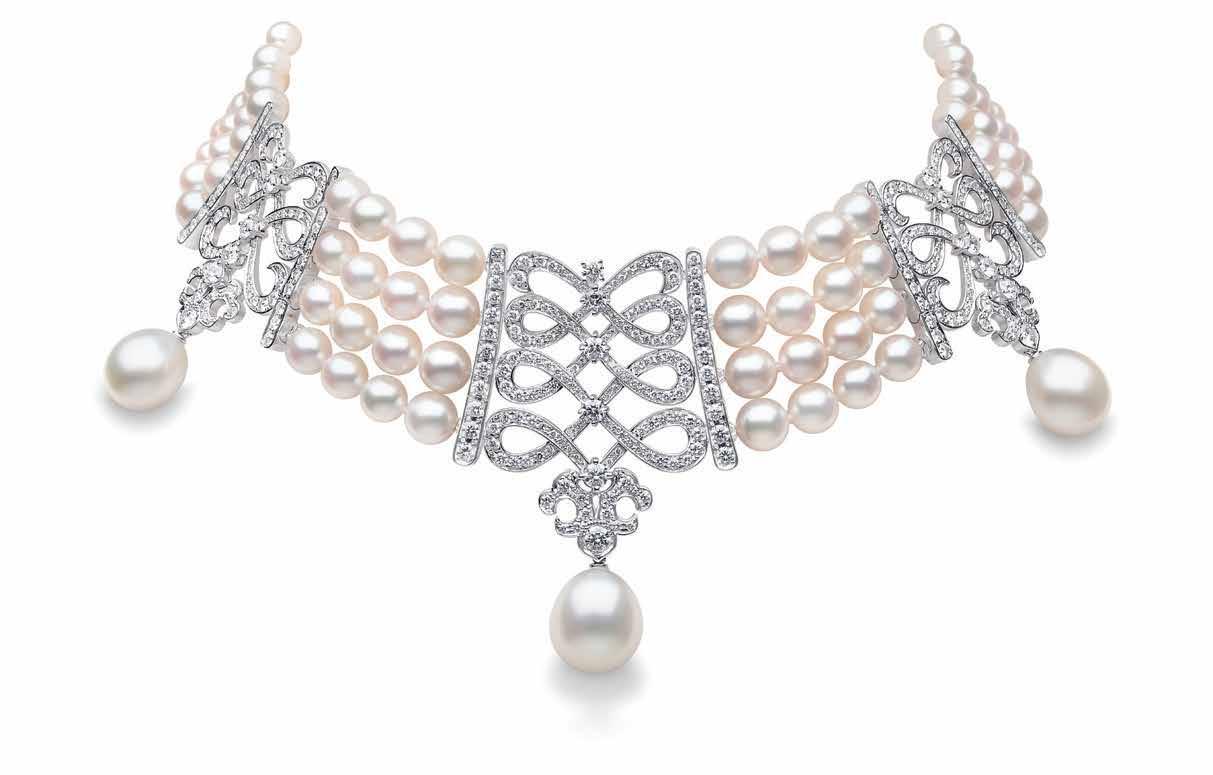
12mm South Sea pearl sits beneath an intricate assembly of diamonds.
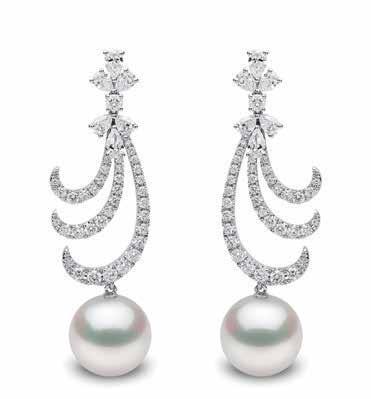
As its name suggests, ‘Bubble’ is a playful mix of numerous Akoya and South Sea pearls of varying sizes that fill the space inside a split circle characterised by 6.11cts of diamonds. Mimicking the freedom of bubbles floating through the air, a matching pair of earrings feature a mix of nine Akoya and South Sea pearls, measuring between 6-10mm.
E legant is ‘Heirloom’, a beautiful collar necklace that sets a number of South Sea and Akoya pearls among 9.03cts of dazzling diamonds.
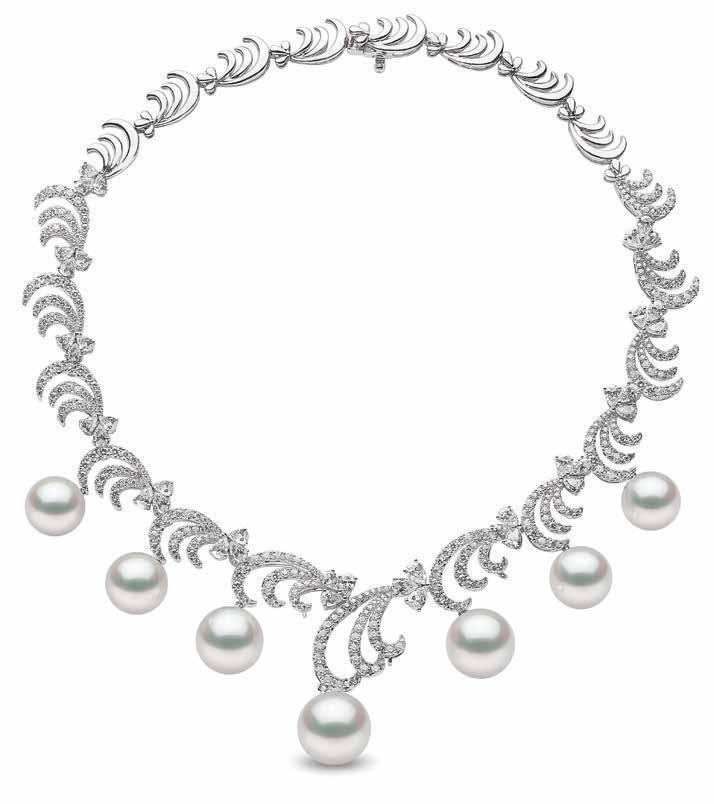
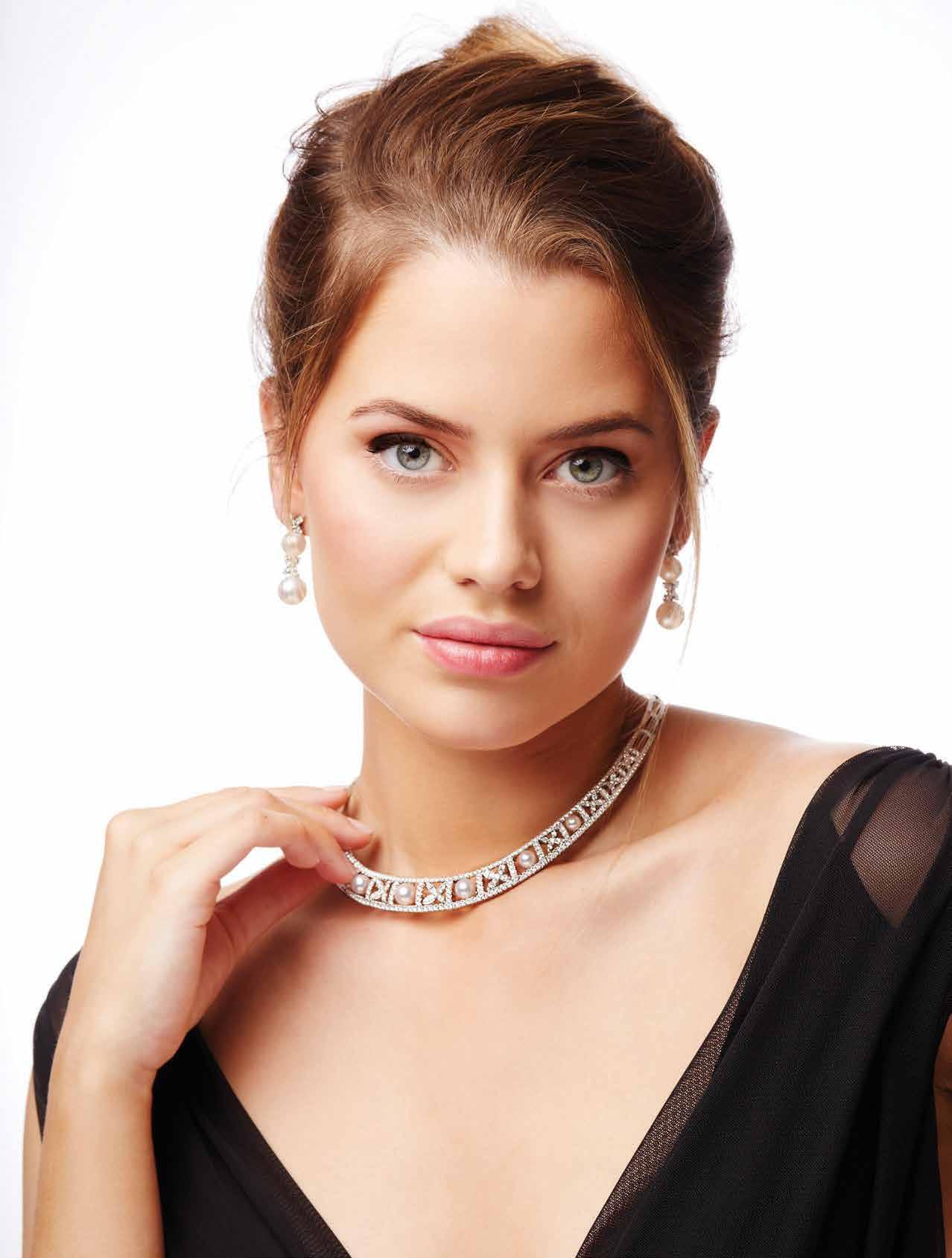
“Each unique piece is a manifestation of our mission to keep redefining pearls (the brand’s motto), showcasing the majesty, beauty, and versatility of these extraordinary gifts of nature,“ says Hakimian, who has seen the likes of Michelle Obama, Beyonce, and Lady Gaga sport his team’s designs. “We can cater for anything a customer is looking for in pearl jewellery, whether a classic heirloom or a modern, fashion forward piece. We aim to continually push the boundaries of pearl jewellery design. We have a vast inventory of loose pearls and strands, allowing us to have a huge variety of options when selecting pearls for each piece.”
Such dedication to setting its own standards extends to the pearl farms Yoko London draws its bounty from. “Over the past 50 years, we have actively chosen to partner with some of the most trusted, environmentally aware, and sustainable pearl farmers in the industry. We now work with thirteen pearl farms across the globe where we have first refusal on the harvest.”
It’s a similar case with the diamonds that are used. “We guarantee that every diamond used in our pieces is conflict free and adheres to the requirements outlined by the Kimberley Process.”
T he other guarantee, of course, is that their pearls will never fall out of fashion.
Made In Britain
How an alliance of watchmakers is aiming to restore Britain to its former glory
WORDS:JOHN THATCHER
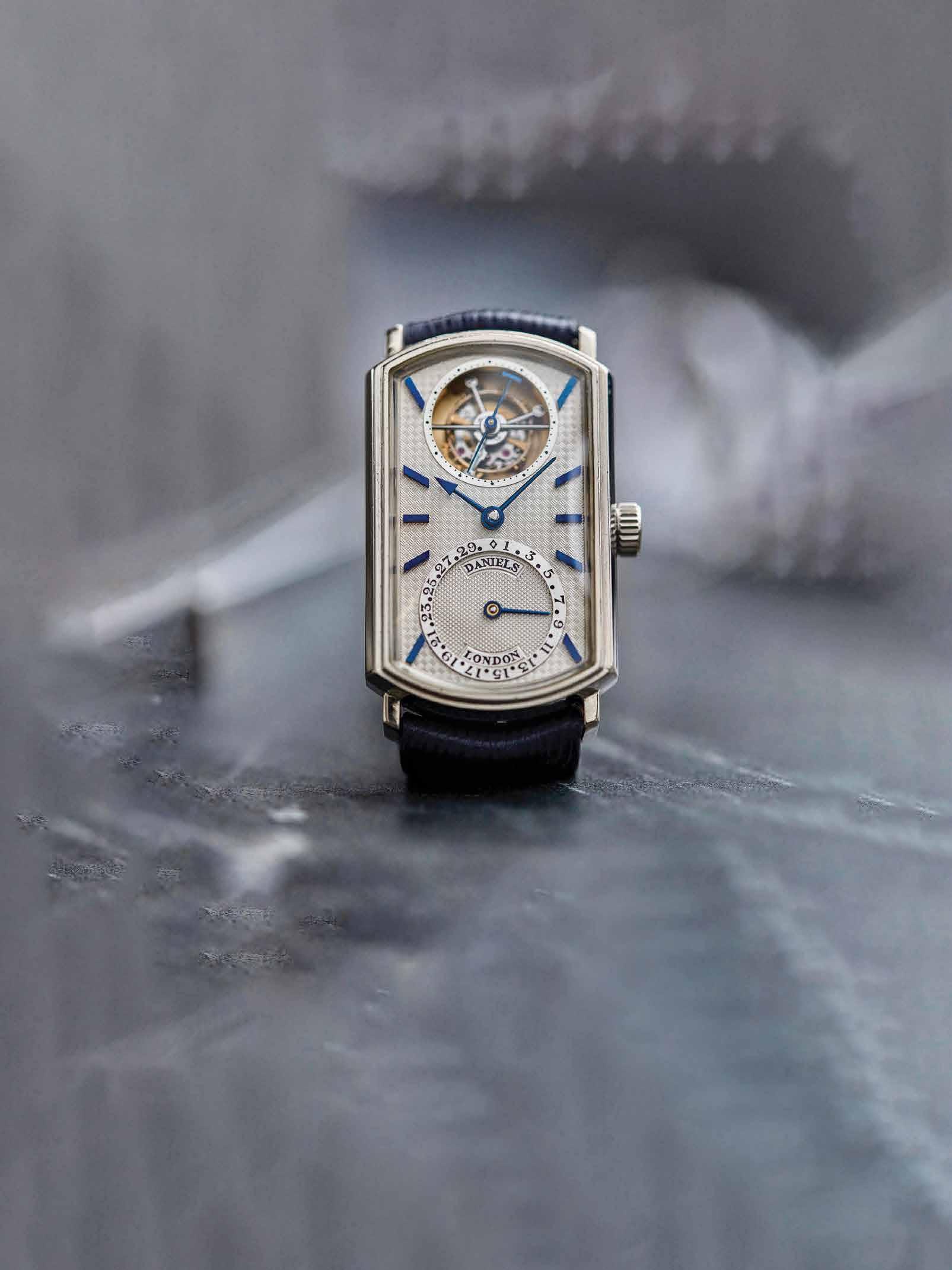

Switzerland may be cited as the cradle of watchmaking, but it could so easily have been Britain.
“It’s a classic case, sadly, of ‘snatching defeat from the jaws of victory,” argues Alistair Audsley, CEO of the Alliance of British Watch and Clock Makers, founded in 2020 to represent a broad and diverse line up of watchmakers, from world-renowned horologists through to innovative start-ups.
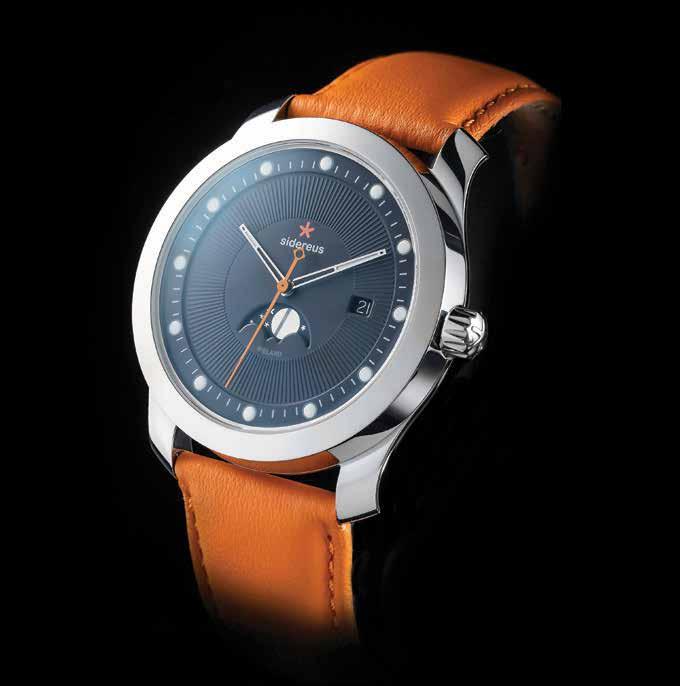
“Firstly, Britain has an undeniable heritage of innovation thanks to a pantheon of great horologists, such as Tompion, Arnold, Mudge, and Graham. Then you’ve got John Harrison, who invented the Marine Chronometer, solving longitude while at sea, changing navigation forever. By the late 19th century, more than 70% of the world’s commerce depended on sea charts that used Greenwich as the Prime Meridian, so Britain literally became the centre of global time.
“However, although Britain was the world’s main producer of watches, we’d adopted a very protectionist approach to the practise of craft horology. With the Industrial Revolution came an unprecedented demand for people to be able to measure time personally — to ‘clock on and clock off’ at the factories they worked in. During the Great Exhibition in 1851 (which took place in London), some enterprising people from Europe proposed a de-skilling and separation of the watchmaking trades to encourage mass production. But instead of being embraced, they were virtually hounded out of London and took their approach to the USA, where it prospered. You could almost chart the decline in Britain from there.” However, the tale of Britain’s watchmaking prowess does not end there. “Britain’s story today is one of potential and, for me, what is particularly exciting is that, with our exceptional heritage and renewed energy, we’ll see enormous growth in the coming years.”

It’s thanks to Audsley and his team at the Alliance that Britain finds itself in such a position, on track to meet its long-term ambition of returning a greater share of production back to the isles. “We have 79 member brands,” enthuses Audsley. “Each is unique.”
At the horological pinnacle – not just in Britain but globally – is Roger Smith, who is also the Alliance’s Chairman.
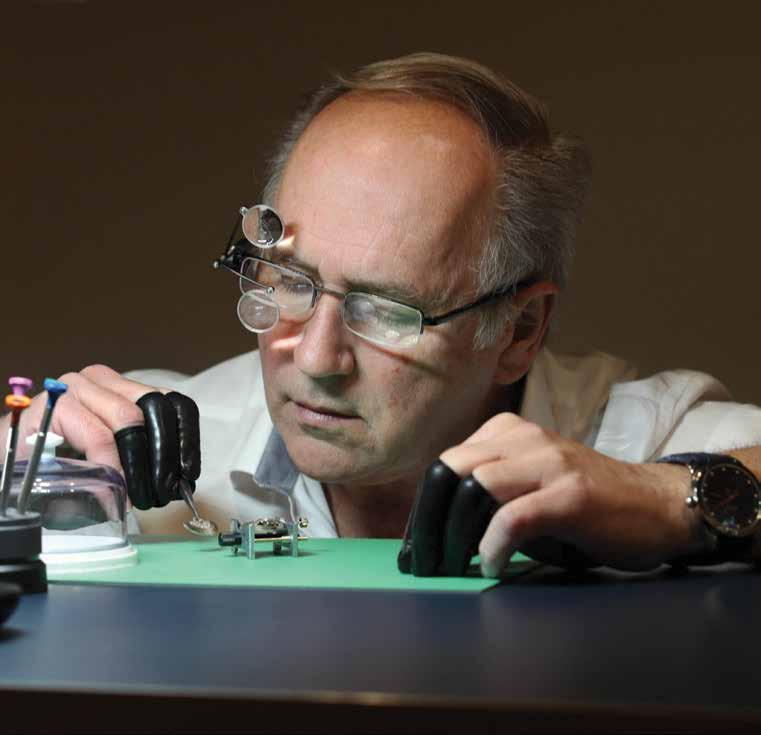


“His studio only makes 15 watches per year, each according to the Daniels Method [George Daniels’ pioneering process of making watches by hand]. A concept is initiated at one end of the studio and the resulting watch, built to a staggering standard by hand, emerges at the other.
“Of great interest to me are the resurgent heritage brands we have. Great examples are Fears and Vertex, both businesses restarted by the descendants of their founders.
“You’ve then got brands that exemplify the creativity and design that are quintessentially British, such as Mr Jones watches and fast rising star, Studio Underd 0 g, whose watch designs put a smile on your face.
“For those interested in true personalisation, you’ve got to discover the work of Bamford Watch Department. They’ve produced some sensational customisations of premium Swiss brands, while also producing their own unique designs.
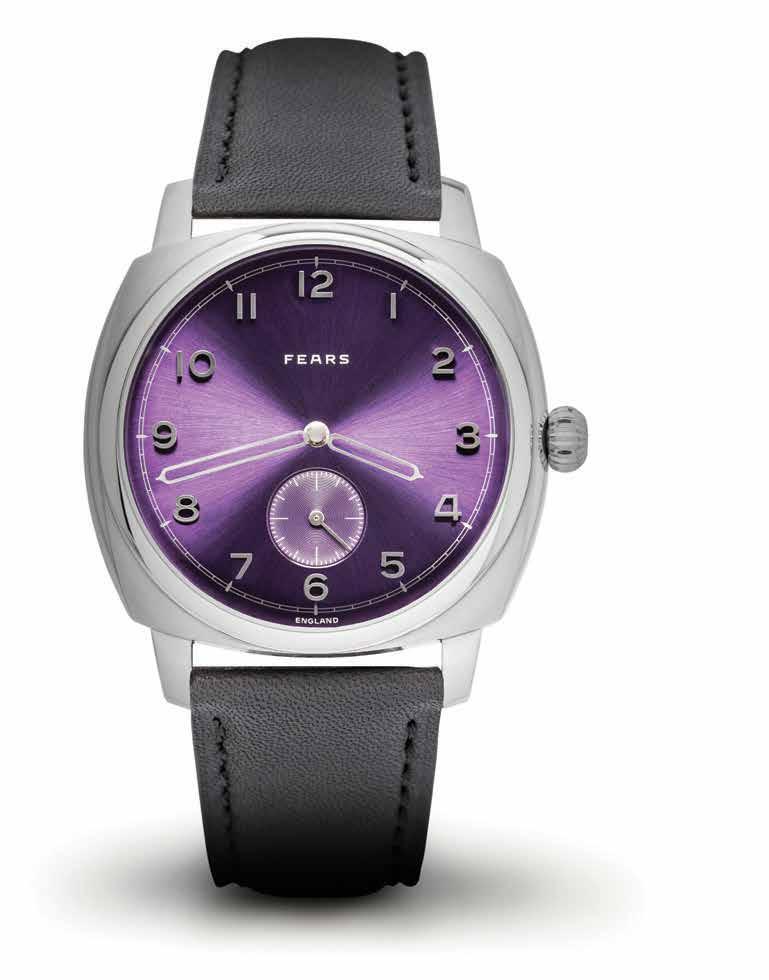
“Meanwhile, Sidereus in Ireland is a great example of how founders have come into the sector from ‘outside’ [the Alliance extends to the Republic of Ireland]. In its case, Bryan Leech was a high end product designer, having worked with the likes of Apple. He took his inspiration from a Neolithic site called Newgrange, which is a 5,000-year-old site used to measure solstices; arguably one of the world’s oldest clocks. Bryan was helped on his journey by another of our members, Schofield watches, founded by Giles Ellis, who again brings a wonderful eccentricity to his brand.
The support of Schofield watches for Sidereus’ initiative is an example of how Alliance members support one another, though the most famous is collaboration is that of Fears and Christopher Ward, who paired together to produce the Alliance 01, a limited edition of 50 numbered watches.

“What was so impressive about this was how both brands insisted that the Alliance 01 watch had to be the result of a true exchange of skills. You had two businesses with different cultures and operations; Fears is a heritage brand making fairly low numbers of watches, while Christopher Ward is a modern disruptor producing high numbers of watches. It started with Fears’ managing director, Nicholas Bowman-Scargill, briefing Christopher Ward’s design team about Fears’ DNA and asking for them to interpret this. The watch deployed Christopher Ward’s jump hour movement, while Fears crafted the dials, cases, and straps.
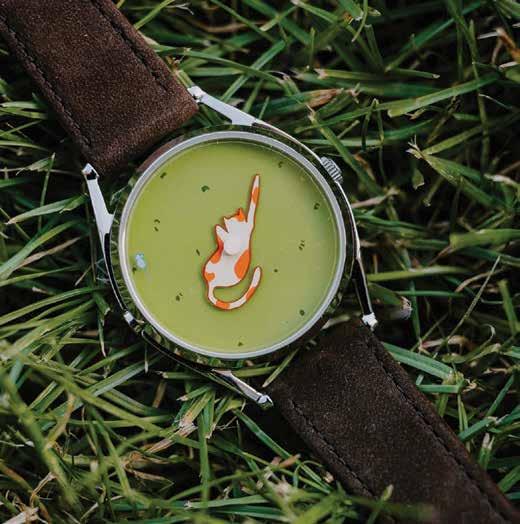
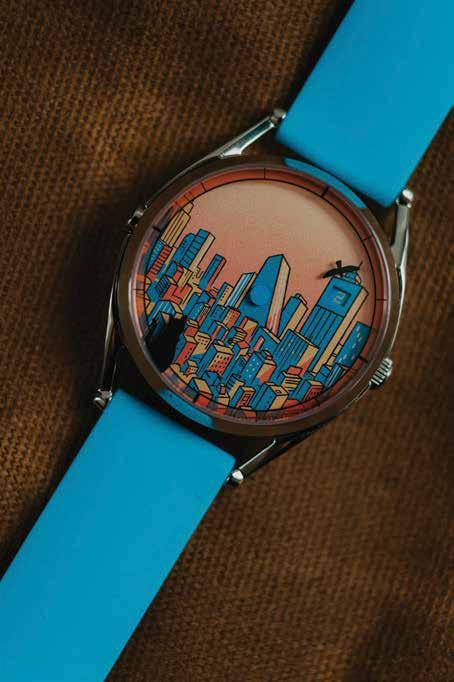
“The result was a stunning example of how our members can not only collaborate but, as both businesses experienced, can become enriched by sharing knowledge.”
Sales of the Alliance 01 were restricted to members of the Alliance of British Watch and Clock Makers, and sold out in just over two minutes. Its success paved the way for an Alliance 02, which is currently in the planning stage. “When we launched the Alliance, we really had no idea how the brands would respond, but the open attitude and total understanding that, what’s good for British watchmaking is collectively good for our individual brands, has really amazed me.”
Similarly surprising, though not to Audsley, is the interest in horology that exists within the younger generation.
“I think we tend to stereotype young people as solely obsessed with the digital world when, in fact, I believe more people across every age group are looking for the analogue — the crafted objects that we can build a deeper relationship with, inspired by the often amazing stories of the makers. That’s partly evinced by the explosion of interest in independent watchmakers among Generation Z globally.
“In parallel, look at how vinyl records have almost turned around the music industry. Here you have the least convenient way of listening to music possible, but the artwork, the tactility, and the organic sound reward with a far deeper experience than simply streaming binary data into your ears via Spotify.”
By amplifying the current buzz about British watchmaking, Audley’s Alliance ensures its only a matter of time before its watchmakers are making their own noise globally.



These pages, from left to right: In Mexico, on the set of Viva Maria!, 1965; In 1971, shot by Douglas Kirkland; on the set of Les Pétroleuses, 1971, shot by Terry O’Neill
A new photo book recalls French actress and singer Brigitte Bardot at the height of her career – a huge name in the 1950s and 1960s, who suddenly retired
WORDS: CHRIS ANDERSON


Brigitte Bardot remains one of French cinema’s biggest stars. A major pop culture icon, prominent throughout the 1950s and 1960s, and a muse for the likes of Dior, Balmain and Pierre Cardin, she is recognised for her work in film, as a singer and model, and more recently as an animal activist. But having withdrawn from fame in 1973, how many of us truly know her? With the release of a new photo book, featuring images captured by two equally-famous names, younger generations are about to be introduced.
Being Bardot, published by ACC Art Books, edited by Iconic Images, includes more than 150 photos and contact sheets, in colour and black and white, showing Bardot in her prime. Taken by the late Douglas Kirkland and Terry O’Neill – perhaps the two biggest names in celebrity photography, with their images of everyone from Marilyn Monroe to Leonardo DiCaprio hanging in galleries and museums across the world – Bardot is depicted on movie sets and behind the scenes, and away from the limelight for playful, more candid moments, with some of the shots never published until now.
Born and raised in Paris, Bardot was a model before she became an actress, first appearing on the cover of Vogue in 1950 at age 15, then again in 1952. She caught the attention of the movie industry, and after a number of minor roles, appearing alongside Kirk Douglas and Dirk Bogarde, found international fame in 1957 with And God Created Woman, directed by her first husband, Roger Vadim. By 1958, Bardot was France’s highest-paid actress.
It was Kirkland that would work with Bardot first, on the set of 1965 film Viva Maria!, shortly after the launch of her singing career, with his images opening the book. Kirkland, who passed away in 2022, was well established himself by this point, having shot for a variety of celebrity magazines. Viva Maria! saw Bardot starring alongside fellow French actress Jeanne Moreau as a touring musical duo who get caught up in a Mexican revolution.
In excerpts from a past interview, Kirkland describes hearing about the assignment. “It was the first time that I met Brigitte,” he says. “The head of marketing at United Artists said, ‘We’ve got a film with Bardot and Jeanne Moreau, and we’re really having a terrible problem, because the French press are all over the place.’ It was a big deal to have these two actresses together on film, so United Artists closed the set to the other photographers, and I had exclusive access.”
Kirkland’s images show Bardot preparing for takes, adjusting her costume, and also away from the set, playing cards and posing with a set of blue curtains. Bardot appears smiling and relaxed in the photographer’s presence, which is perhaps why she agreed to work with him a second time, travelling alongside her on her first trip to the US to promote the film. Kirkland photographed Bardot on the plane, in New York and Los Angeles, at the movie’s premiere, and in quieter moments in her hotel room.
Then both Kirkland and O’Neill worked with Bardot on the set of 1968’s Shalako, a Western starring Sean Connery, filmed at Shepperton Studios in London, and on location in Spain. O’Neill, who passed away in 2019, went first, catching up with the actress at the Deauville Film Festival in France, where Bardot initially met her co-star, Connery – a friend of O’Neill’s after his work on the Bond movies. There is a relaxed feel to the images, taken on a golf course, at play in the hotel, and at dinner. “She was easy to work with, a natural in front of the camera,” O’Neill would admit later, before saying of her meeting Connery: “They hit it off instantly. I had two of the best-looking people in the world at my disposal!”

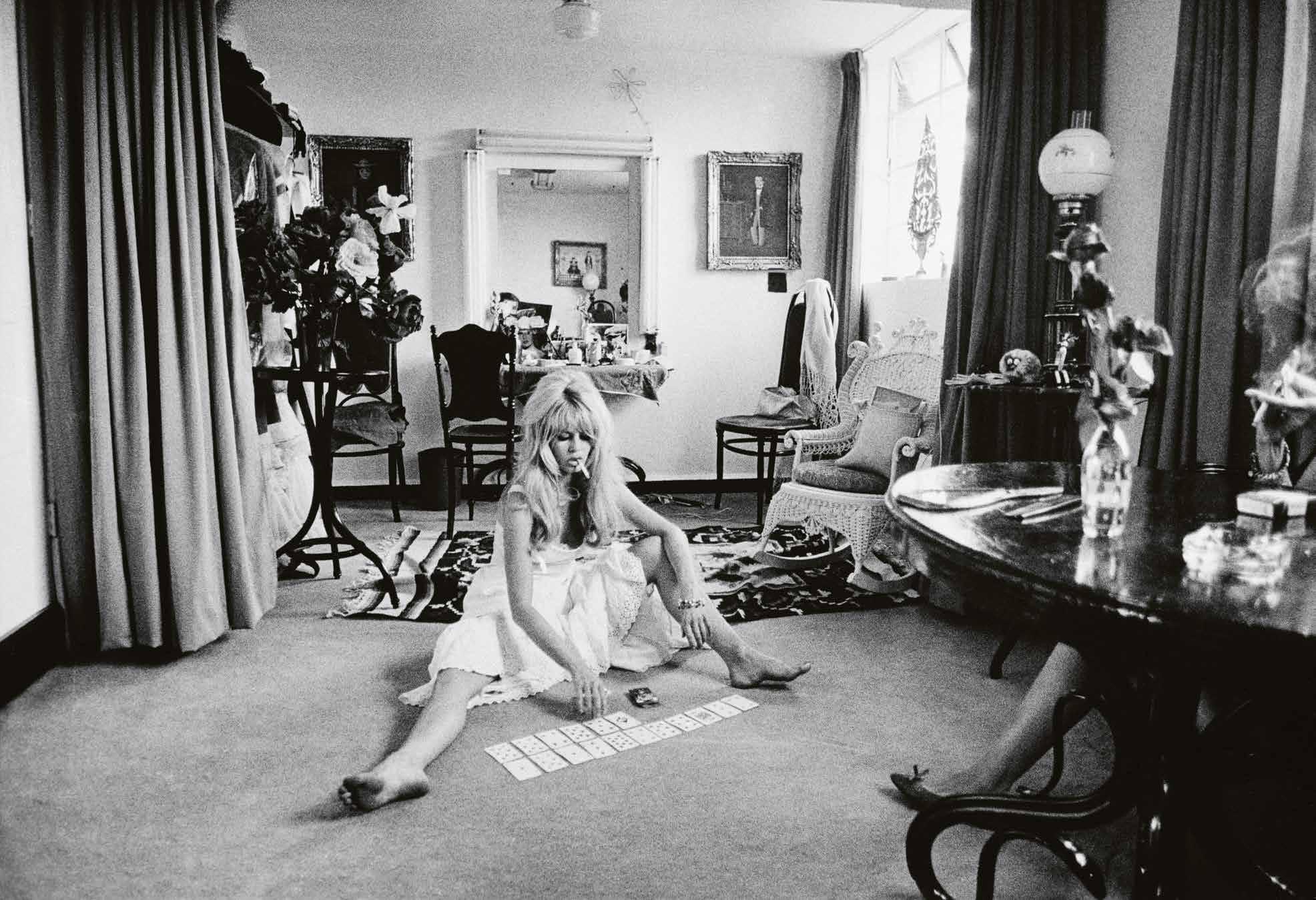

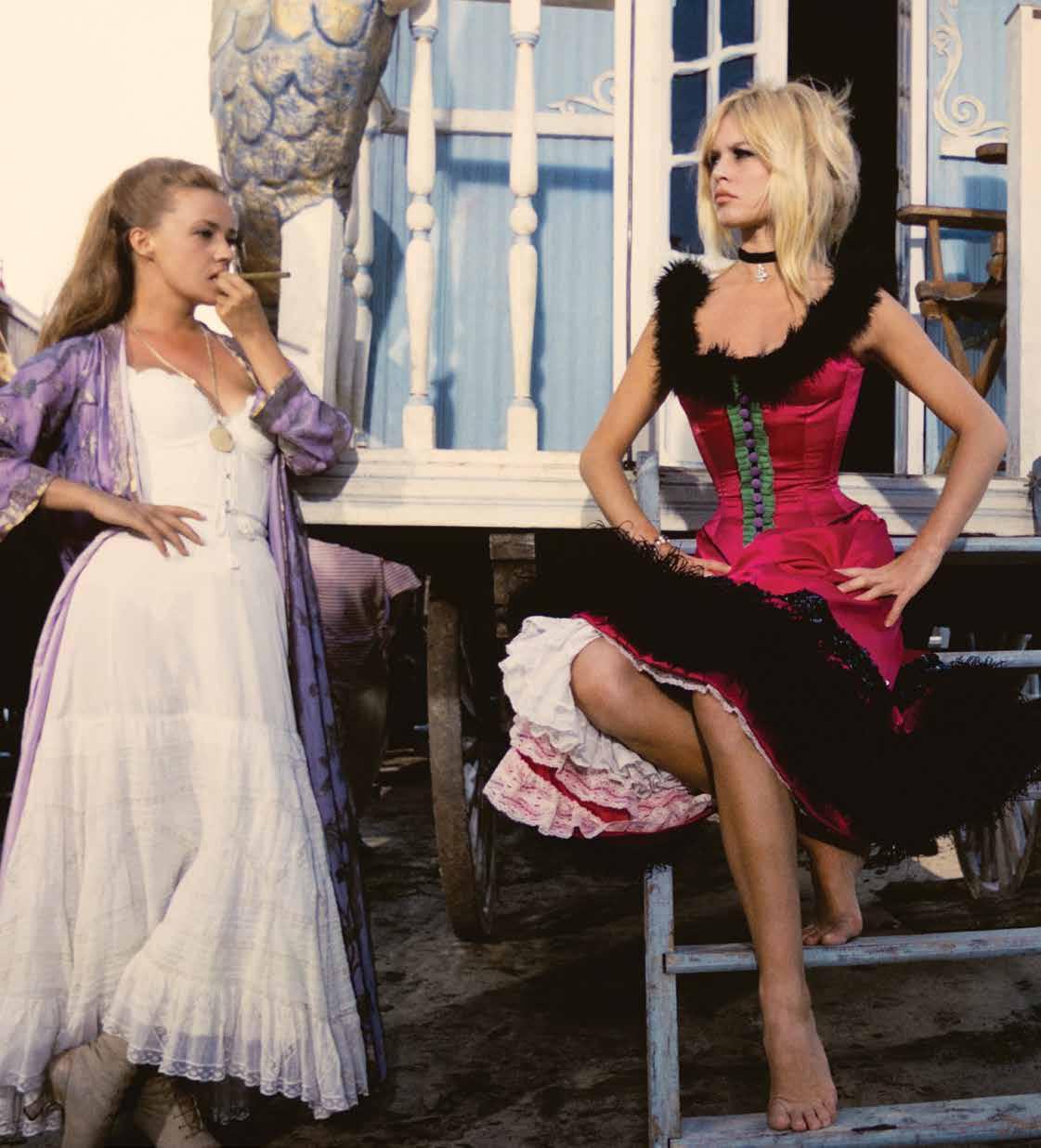
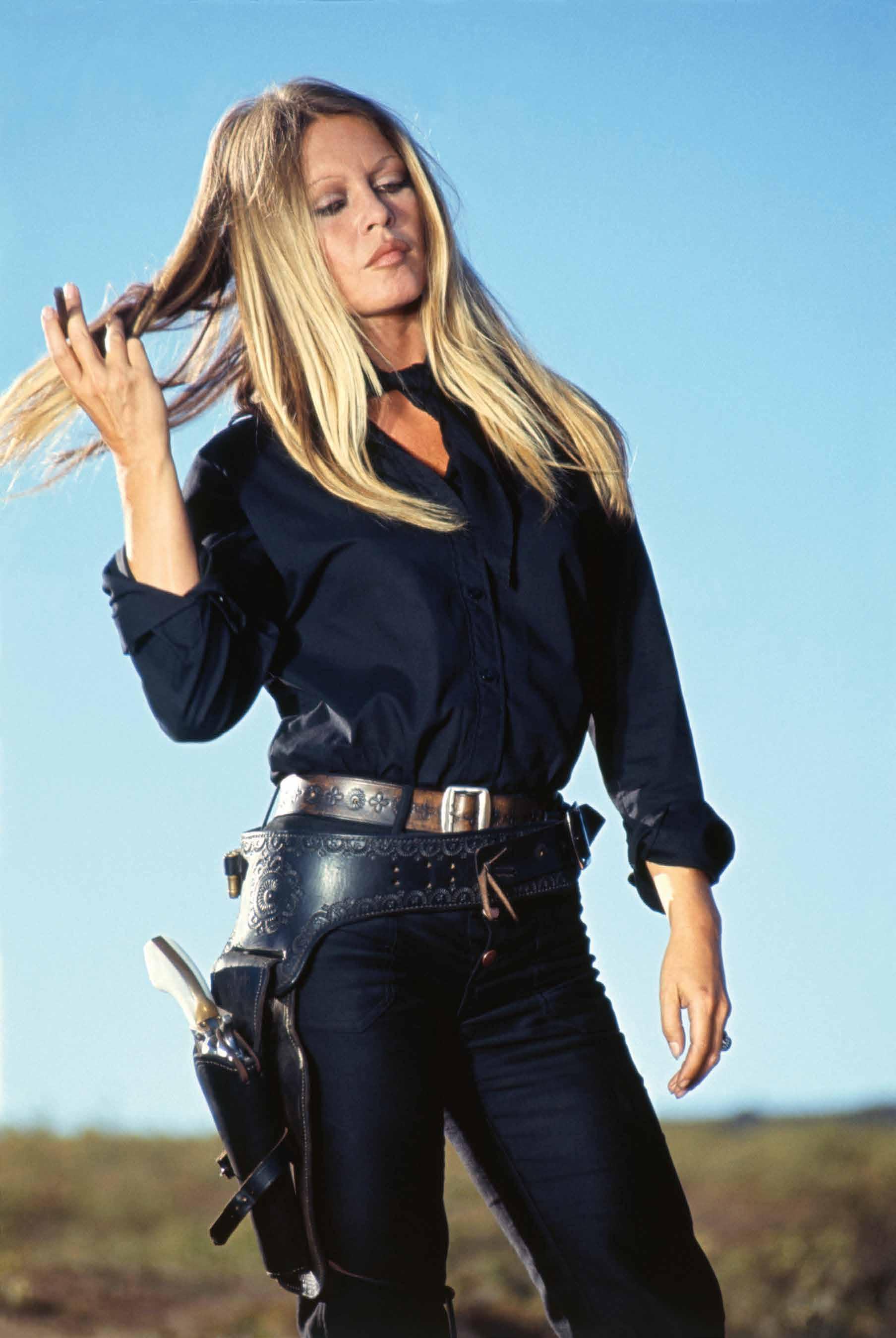
Previous page, clockwise from left: shot in between takes during the filming of Viva Maria!, 1965; on the set of the same film,1965. All images shot by Douglas Kirkland
These pages, clockwise from left: on the set of Les Pétroleuses, 1971; on the set of Les Novices, 1971; with Sean Connery to promote their film Shalako, 1968. All images shot by Terry O’Neill
O’Neill also spent time on set during filming, photographing Bardot in a black hat and shirt, while Kirkland was assigned to conduct a fashion shoot behind the scenes. He pictures Bardot wearing a bow in her hair, a blue tank top and a yellow dress, at times dancing on a table, and afterwards asleep in a car. One image from Kirkland’s shoot, of Bardot with her hair up, is used as the cover of the book.

While that would complete Kirkland’s work with Bardot, O’Neill would see her twice more – first on the set of 1970 comedy Les Novices, and then for the 1971 Western movie Les Pétroleuses (The Legend of Frenchie King). It was during their final meeting in Spain that O’Neill captured perhaps the most iconic Bardot image of all. “It was a windy day, and she was standing and waiting to film a scene,” he recalled in a past interview. “I noticed she kept brushing the hair out of her eyes, and combined with the cigarette dangling from her mouth, I knew it would capture how sexy, strong and wild her image was. When I developed the film, the first time I saw those images, I got chills.”

And who would have realised, just two years after the photo was taken, Bardot would announce her retirement, turning her attentions to animal activism instead? Her work in that field has since received awards from UNESCO and PETA, and even the French Legion of Honour in 1985. At age 88, it seems that this is her preferred way of life, telling Vogue Homme in a rare interview in 2012, “I was literally crushed by celebrity. No-one can imagine how awful it was. A nightmare. I just couldn’t live like that anymore.”
While she was happy to let photographers such as Kirkland and O’Neill into her world, venturing behind the scenes, it appears more was happening beneath the surface. But as O’Neill described, “She was a stunning woman. Brigitte had a wonderful sense of humour, and neither the towering ego nor the insecurity of so many film stars.” High praise indeed, and something, thanks to the book and these images, we can all discover again.
Being Bardot is published by ACC Art Books (accartbooks.com)










